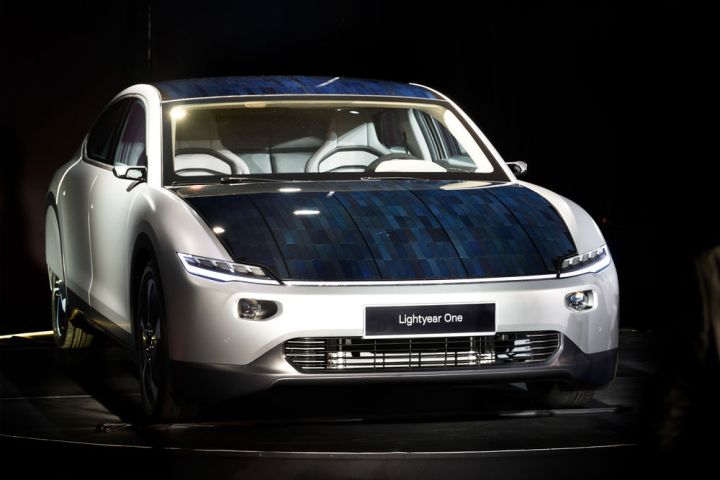Have you ever heard of an electric car that could charge itself? That could soon become a reality, thanks to Lightyear. The Dutch tech company that develops ultra-energy efficient automotive platforms has just revealed its long-range prototype, the Lightyear One. The self-powered car is able to cover a range of 450 miles (725 km) and is equipped with a small battery that can be charged when under direct sunlight, or from conventional charging stations. The main idea is that you could take the car on long road trips, since it isn’t dependent on charging infrastructures like the traditional electric vehicles, such as Tesla.
Five square meters of solar cells that are located beneath safety glass cover the roof and hood of the car. The company claims the structure is “so strong that a fully-grown adult can walk on them without causing dents.” It’s also designed to be very lightweight, which makes it more power efficient. With less weight, you get a better range from conventional charging, allowing the car to be charged for up to 400 km (nearly 250 miles) in one night from a regular 230V socket. The solar panels add an additional charge of up to 12 km/hour (7.5 miles/hour).

Created back in 2016, Lightyear is a relatively new company. While they were at college, the company’s founders developed a solar-powered car – named “Stella” – for the World Solar Challenge in Australia, becoming the world champion in their class. After winning, they planned to create the Lightyear company, with the goal of manufacturing and selling similar vehicles on a larger scale. The One is the company’s first production model.
How much does a solar-powered car cost?
Speaking of which, the Lightyear One certainly doesn’t come cheap. There’s a reservation fee to get one of the first 500 manufactured cars, and it is no less than a colossal €119,000, which translates to $135,000. The expected delivery won’t happen before 2021. This means the Lightyear is more like a purchasable concept than a production vehicle.
If you happen to have a few hundred thousand dollars to spare and you wish to help Lightyear to publicly test their first production car, you have an opportunity to drive another option for environmentally friendly transport.





